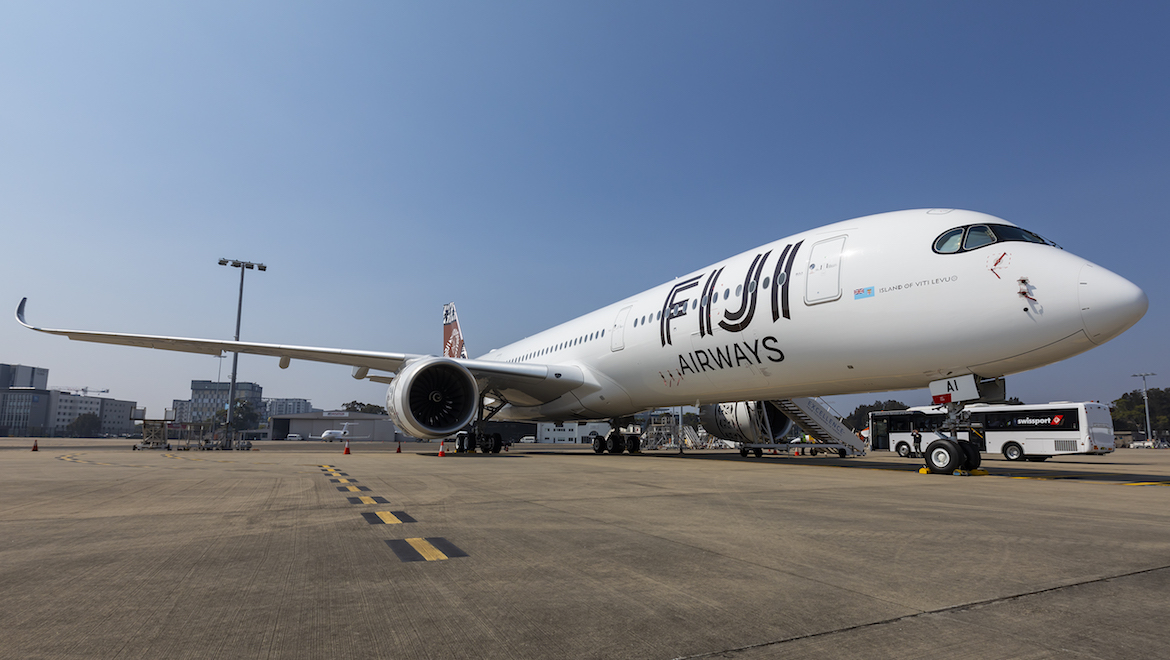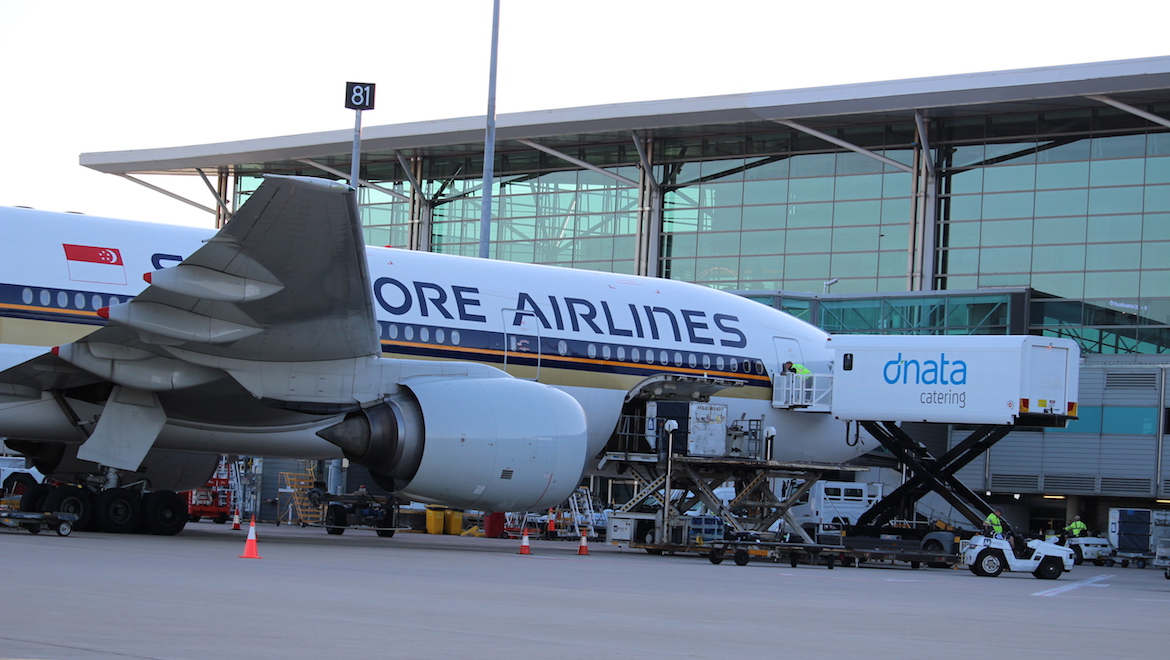
Excitement is building ahead of the arrival of the first Fiji Airways Airbus A350-900 in Nadi and its entry into service from December 1 2019.
On November 15, Fiji Airways became the first airline in Oceania to operate the A350-900 when it took delivery of DQ-FAI from Airbus’s Toulouse headquarters.
The aircraft, named Island of Viti Levu after Fiji’s largest island, was on display at the Dubai Airshow before stopping in Australia on the way home to Nadi.
After a few days in Brisbane, Fiji Airways took the A350-900 to Sydney on Thursday, when it conducted tours of the aircraft for invited guests, media and staff.
The A350-900 was due to fly to Fiji on Saturday, where it was expected to conduct a low-pass of Nadi and other parts of the country in an event likely to draw huge crowds.

The aircraft was scheduled go into commercial service on December 1st 2019, flying daily between Nadi and Sydney.
After the arrival of the second A350-900 in mid-December, there will be some Auckland-Nadi and Brisbane-Nadi flights for crew training and familiarisation purposes before the type is deployed on the Nadi-Los Angeles route from January 1 2020.
Fiji Airways head of global sales and distribution Lee Poh Kait says having the recently-delivered Airbus A350-900 operating to both Sydney and Los Angeles will support the airline’s ambition of getting more Australians to travel to the United States via Nadi.
Lee said having the latest cabin products on the A350-900, with lie-flat seats with direct aisle access for every passenger in business class, an extra-legroom option in economy called “Bula Space” and inflight internet Wi-Fi, would help support that goal.
“This is a classic example of how we want to get more traffic into the US by getting the A350 operating from Sydney to the United States via Nadi,” Lee told Australian Aviation on board DQ-FAI in Sydney on Thursday.
Lee said local authorities and tourism operators in Fiji were supportive of the carrier’s efforts to encourage travellers to consider so-called dual destination holidays.
This included initiatives such as the waiving airport taxes for visitors staying less than three days, as well as attractive accommodation packages for Australians heading to the United States via Nadi or Americans stopping in Fiji enroute to this part of the world.
“To sustain daily services, it has to be based on beyond traffic support,” Lee said.
“For us to do that we need to continue to grow beyond market.
“We are very excited about what we are achieving right now. Of course there is more to be done.”

Fiji Airways flies to three destinations in the United States – Honolulu, Los Angeles and San Francisco.
Meanwhile, it serves three Australian ports – Brisbane, Melbourne and Sydney – from its Nadi hub with a mixture of mixture of Boeing 737, A330 and, from December 1, A350-900 equipment. The airline also flies between Suva and Sydney.
The A350-900s have been configured to carry 334 passengers in a two-class layout, comprising 33 B/E Aerospace Super Diamond business class seats, 39 extra legroom economy seats and 262 economy seats. All economy seats were the Recaro CL3710.
It will be the largest aircraft in the Fiji Airways fleet, with 21 more seats than the A330-300, which has 313 seats (24 business, 289 economy) and 51 more seats than the 273-seat A330-200 (24 business, 249 economy)

Currently, Fiji Airways has five A330-200s and one A330-300, as well as Boeing 737-800 and 737 MAX 8 narrowbodies.
Two of the A330-200s were picked up in 2018 on short-term leases while the airline evaluated its future long-haul aircraft needs.
The A330 shares a common type rating with the A350. Pilots qualified and current on the A330 would be able to fly the A350 by taking a “differences training” course, Airbus said, resulting in significant cost savings and operational flexibility.
“One of the reasons why we continued to work with Airbus is that commonality we can achieve to drive costs lower,” Lee said.
https://www.instagram.com/p/B5JCLgjh6IM/?utm_source=ig_embed&utm_campaign=loading












Kim
says:Has Fiji Airways ceased serving Adelaide?
WOFA
says:Hi Kim,
Yes, the Adelaide-Nadi flights ended in late July 2019. The details are in this story: https://thewofa.com/2019/07/fiji-airways-puts-adelaide-nadi-on-pause/
Thank you for reading and kind regards.